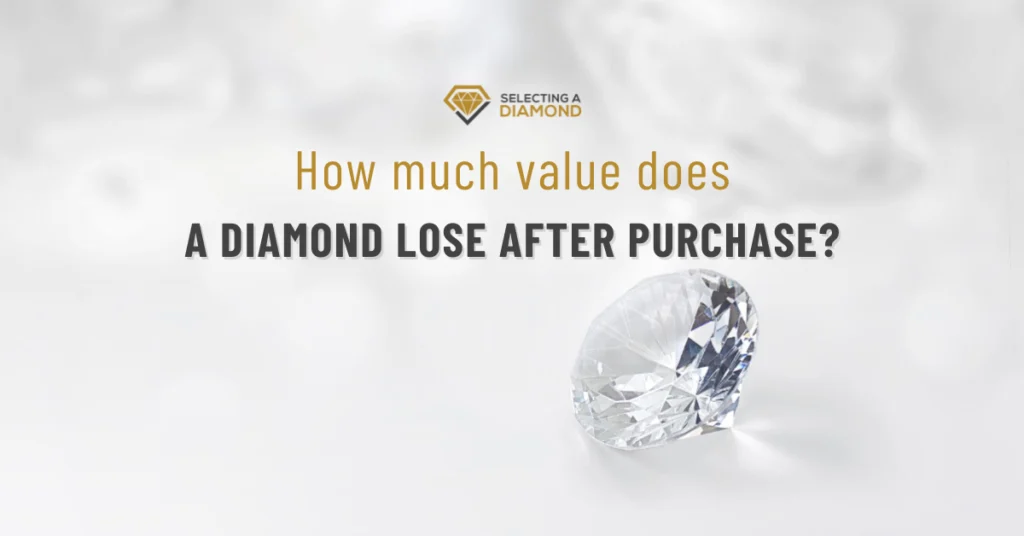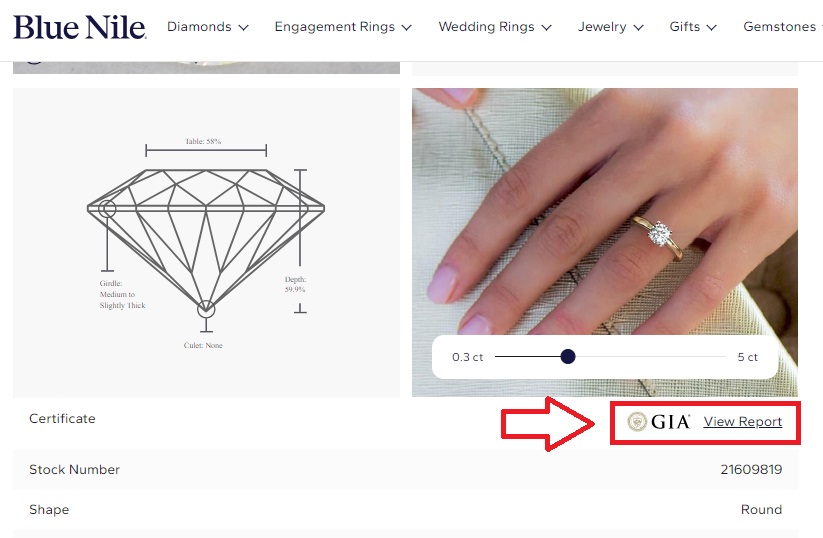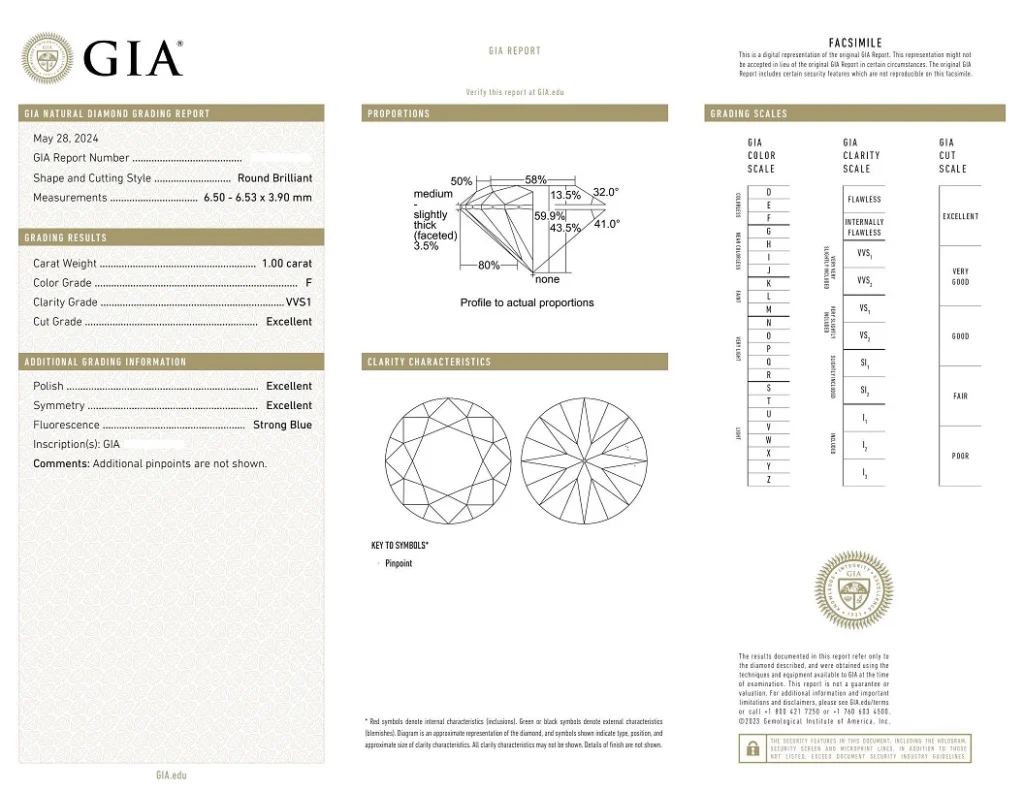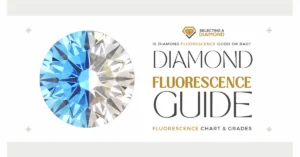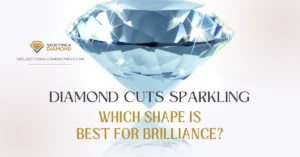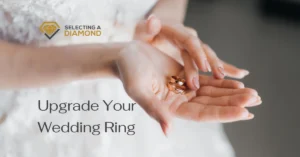We may earn a commission when you purchase through our affiliate links, at no extra cost to you. This helps support our work and allows us to continue providing unbiased, expert diamond advice.
Buying a diamond is a big moment, whether it’s for an engagement ring, a special gift, or simply to treat yourself.
But have you ever wondered, how much value does a diamond lose after purchase?
➡ In this article:
We’ll dive into what happens to a diamond’s value once it leaves the jewelry store.
➡ You’ll learn about:
- The key factors that impact resale value
- Why diamonds aren’t like other investments
- And tips to make the most informed purchase.
➡ By the end:
You’ll have a clearer understanding of what to expect if you ever decide to sell your diamond.
The Initial Value of a Diamond
-
How Diamonds Are Priced at Retail?
When you buy a diamond at a jewelry store, its price isn’t just based on its size or sparkle
Retail diamond pricing is influenced by several factors:
1. The 4Cs
These stand for carat (weight), cut (how well it’s shaped), color (how white or tinted it is), and clarity (how free of imperfections it is).
A higher grade in these categories often means a higher price.
2. Brand and Store Markup
Retailers need to cover their expenses like store rent, staff salaries, and marketing, this means they add a markup to the diamond’s base value.
3. Design and Setting
If the diamond is part of a stunning ring or necklace, the craftsmanship of the jewelry adds to its retail price.
➡ For example:
A diamond sold at a well-known luxury brand store may cost much more than the same quality diamond from a smaller retailer, simply because of the brand’s name.
While the initial value might seem high, it’s important to know that some of this price reflects added costs, not just the diamond’s raw worth.
Why Do Diamonds Lose Value?
-
Factors That Contribute to Depreciation
Diamonds may be forever, but their value often takes a hit after purchase.
👉 Here’s why:
1. Retail Markups
When you buy a diamond, part of what you’re paying for includes the retailer’s overhead costs, things like advertising, staff, and store maintenance.
These costs don’t carry over if you sell the diamond later!
2. Market Demand
The diamond market can fluctuate based on supply and demand.
While a specific type of diamond might be in high demand one year, trends can shift, affecting resale value.
3. Custom Designs
Unique settings or personalized designs add to the cost of a diamond at retail.
However, these extras may not hold the same appeal or value for potential buyers.
4. Perceived Quality vs. Actual Quality
A diamond might appear flawless under store lighting, but small imperfections can lower its resale value.
Buyers in the second-hand market are usually stricter about inspecting for quality.
Think of it like buying a new car! once you drive it off the lot, its value starts to drop, even if it’s in perfect condition, the same goes for diamonds.
While they remain beautiful and cherished, their resale price usually reflects wholesale values, not retail prices.
How Much Value Does a Diamond Lose After Purchase?
-
Typical Percentage Drop in Value
When you purchase a diamond, it’s important to know that its resale value might not match what you paid.
On average, a diamond can lose anywhere from 30% to 70% of its value after purchase.
This might sound surprising, but here’s why it happens:
1. Wholesale Prices vs. Retail Prices
As mentioned above, the price you pay at a jewelry store includes markups for the retailer’s profit, packaging, and branding.
When you sell the diamond, you’re usually offered the wholesale price, which is much lower.
2. Buyer Preferences
Buyers in the second-hand market, like pawnshops or private collectors, often prioritize cost over brand, they won’t pay extra for the store’s name or the fancy box.
3. Condition and Certification
If your diamond lacks a reputable grading certificate (like GIA or AGS), its value may drop even further.
A certified diamond is much easier to resell and typically fetches a better price.
That’s why it’s important to buy diamonds from trusted places like James Allen and Blue Nile, which provide a GIA certificate with every diamond sold.
This certificate ensures the quality and authenticity of your diamond, here’s what it looks like:👇
➡ For example:
Let’s say you bought a diamond ring for $10,000.
Depending on the factors above, you might only get $3,000 to $7,000 if you decide to sell it later.
How to Minimize Value Loss?
-
Tips for Buying Diamonds with Better Resale Potential
Buying a diamond is a big decision, and while its emotional value is priceless, making a smart choice can help preserve its monetary worth too.
👉 Here are some tips to consider:
1. Prioritize Certified Diamonds
As mentioned above, always choose diamonds with a GIA or AGS certificate.
2. Opt for Timeless Shapes
Round brilliant cuts are the most popular and retain value better than trendy shapes.
Other classics, like princess or oval cuts, are also good options if you’re looking for something unique but timeless.
3. Focus on Quality Over Size
A smaller, high-quality diamond often holds value better than a larger one with visible flaws.
Balance the 4 Cs (cut, clarity, color, carat) to find the best combination for your budget.
4. Consider Resale-Friendly Settings
A simple, classic setting in platinum or gold tends to hold value better than overly ornate designs that may not appeal to everyone.
A clean and elegant design is often easier to resell.
5. Maintain the Diamond’s Condition
Protect your diamond from chips or scratches by storing it properly and cleaning it regularly, a well-maintained diamond always looks more appealing to potential buyers.
6. Understand the Market
Diamonds in high demand, such as those in standard carat sizes like 0.50, 1.00, or 2.00, tend to resell at better prices.
Research the trends to know what buyers are looking for.
7. Shop Smart
Avoid paying excessively high retail markups.
Buying from reputable online retailers like James Allen or Blue Nile can help you save on the upfront cost while still getting top-quality diamonds.
👉 Real-Life Tip:
Imagine buying a 1-carat round diamond with a GIA certificate in a classic platinum setting.
Not only does this combination look stunning, but it also holds significant resale value if you ever need to part with it.
Conclusion: Key Takeaways
1. Diamonds lose value after purchase
Most diamonds drop in value immediately (On average from 30% to 70%) due to retail markups and changing market demands.
2. Certification matters
Always choose diamonds with GIA or AGS certificates to ensure quality and boost resale potential.
3. Timeless shapes retain value
Round brilliant and other classic cuts are better investments compared to trendy styles.
4. Quality over size
A smaller, high-quality diamond often holds value better than a larger one with flaws.
5. Shop from trusted sellers
Reputable stores like James Allen and Blue Nile provide certified diamonds at fair prices, making them a safer choice.
6. Care for your diamond
Protect it from damage and keep it in excellent condition to maintain its worth.

